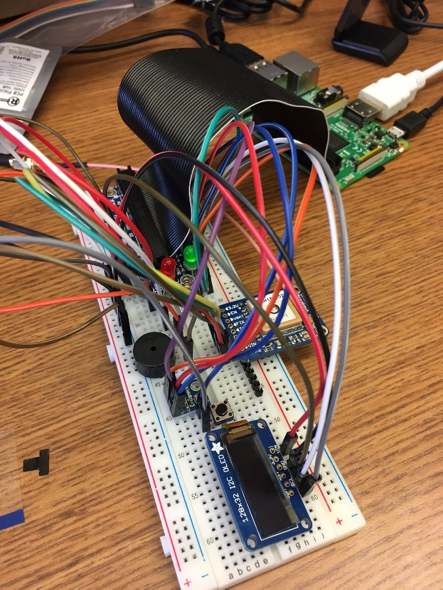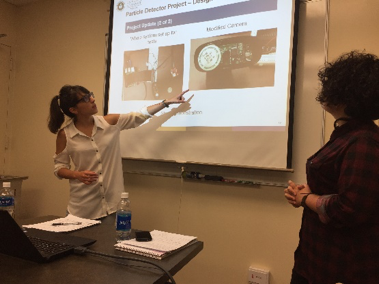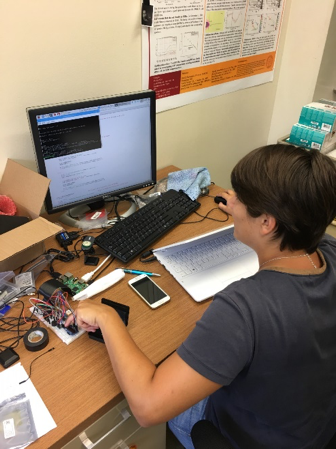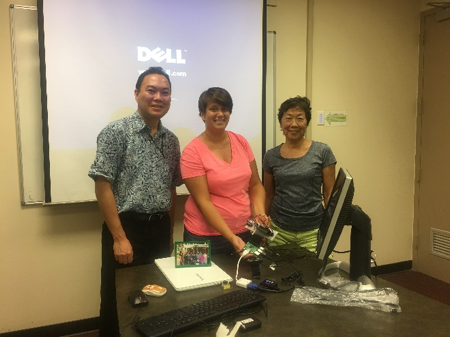Faculty Sponsor
Dr. Veronica Bindi

Professor, Department Chair, Department of Physics and Astronomy, University of Hawai‘i at Mānoa
STEM Pre-Academy is honored to be working in collaboration with Dr. Veronica Bindi. Dr. Bindi's main research focuses on the study of dark matter, cosmic rays, solar modulation, and solar energetic particles in space. She has been a part of the team at CERN that led to the construction, integration, and testing of the Alpha Magnetic Spectrometer, or AMS-02, detector that has been installed on the International Space Station. Hailing from Italy, Dr. Bindi brings her fresh and exciting take on physics to students around the State of Hawai‘i and the world on topics from cosmic rays, to preparing for a mission to Mars.
Links
Space Particle Group Outreach
Featured Workshop
When is the Best Time to Send Astronauts to Mars?
When is the Best Time to Send Astronauts to Mars? was a workshop for students and teachers that explored the range of questions that must be answered and risks that must be overcome to send astronauts to the red planet. Dr. Veronica Bindi invites you to explore the video modules and activities that will inspire middle and high school teachers and students.
Scientific Research Activities

TED-Ed - How Cosmic Rays Help Us Understand the Universe - Veronica Bindi
We only know 4% of what the universe is made up of. Can we also know what lies beyond our galaxy ... and if there are undiscovered forms of matter?

Presentation: Introduction to Cosmic Rays
This presentation provides background information about the importance of studying cosmic rays, about cosmic ray detection techniques, and about the source of these fascinating particles.
QuarkNet and AMS-02 Activities for the Classroom

Long-Term Solar Modulation with AMS-02
Basic Level (Suggested for grades 6-8)
Advanced Level (Suggested for grades 9-12)
In this activity, you will use the proton rate (i.e. the number of protons per second arriving at Earth) measured by the Alpha Magnetic Spectrometer (AMS-02) to explore how cosmic rays are influenced by the Sun - an effect called solar modulation.
You will use measurements of protons with different energies to investigate whether solar modulation affects particles of all energies in the same way or if it is an effect that varies with energy.

Search for Solar Energetic Particles with AMS-02
Basic Level (Suggested for grades 6-8)
Advanced Level (Suggested for grades 9-12)
In this activity, you are challenged to identify particles accelerated by the Sun, called Solar Energetic Particles measured by Alpha Magnetic Spectrometer (AMS-02) a particle detector flying onboard the International Space Station (ISS).
After you have found your SEP event, you will compare it with other teams’ events to discover which SEP event is the most intense, which has the highest energy SEPs, and more.

Study Cosmic Rays with Neutron Monitors
Advanced Level (Suggested for grades 9-12)
In this activity, you will learn about cosmic ray properties as measured by neutron monitors. There is a worldwide network of NMs that are used by scientists to monitor cosmic rays. We can use this network to measure a number of known cosmic ray properties and make predictions about what we can measure with our particle detector.
First Explorer Particle Detector Project
 STEM Pre-Academy partnered with Dr. Veronica Bindi, Associate Professor, Department of Physics at the University of Hawai‘i at Mānoa on the First Explorer Particle Detector Project. The project’s objective was to design an innovative, low-cost particle detector for use in school science applications.
STEM Pre-Academy partnered with Dr. Veronica Bindi, Associate Professor, Department of Physics at the University of Hawai‘i at Mānoa on the First Explorer Particle Detector Project. The project’s objective was to design an innovative, low-cost particle detector for use in school science applications.
Under Dr. Bindi’s direction and with guidance from Davin Sasaki (Project Manager, STEM Pre-Academy), three UHM Physics and Astronomy undergraduate student interns from Italy and France teamed up with university researchers and retired science and physics teachers to successfully develop and test a prototype detector.
The prototype was made using a Raspberry Pi mini-computer, a desktop computer webcam, and various other off-the-shelf parts and stands as a successful proof-of-concept for a low-cost particle detector.
The prototype is currently being prepared for demonstration and possible research applications. Stay tuned!
Check out these photos from the project.







